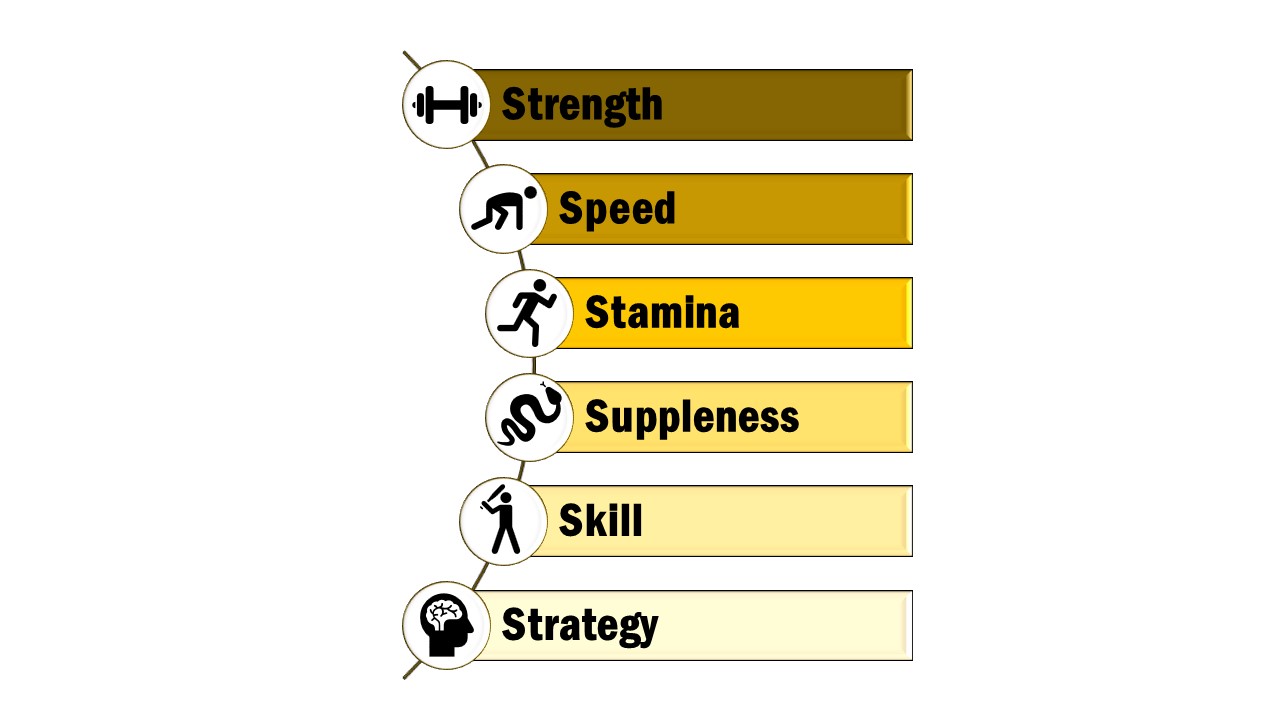Athleticism
We watch sports and are quickly able to pinpoint who the “athletic” players are on the field and court. What makes up our definition of athleticism? Performance specialists define “athleticism” as comprising 6 components.
Adapted from Lance Walker of Michael Johnson’s Performance Center
Strength
The ability of a muscle or muscle group to produce maximal force for one repetition.
Speed
The ability to move the body a large distance in a short amount of time either in a straight-line fashion or in an unpredictable, side-side manner (agility). Demonstrates the ability to produce muscle force very rapidly.
Stamina
The ability of the athlete to perform an activity for an extended period of time across all intensities of work.
Suppleness
Also known as “flexibility,” an athlete who can bend tends not to break. Flexibility refers to the ability of a muscle to lengthen. Joint mobility refers to a joint being able to move through its designed range of motion. An athlete with good flexibility and joint mobility are able to move in a manner that is efficient and effective.
Skill
Many hours of proper practice leads to an athlete grooving motor patterns to acquire a skill and eventually perform that skill effectively, efficiently, and consistently successfully.
Strategy
Understanding the rules of the game, tendencies of their opponents, and what to do during specific situations.


